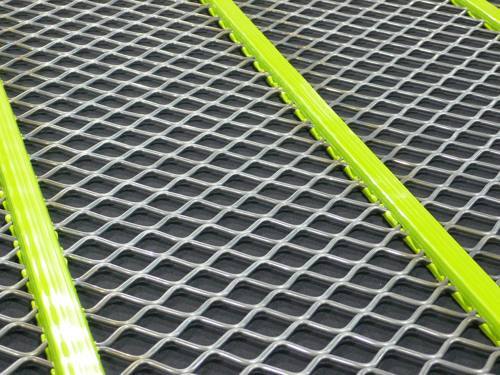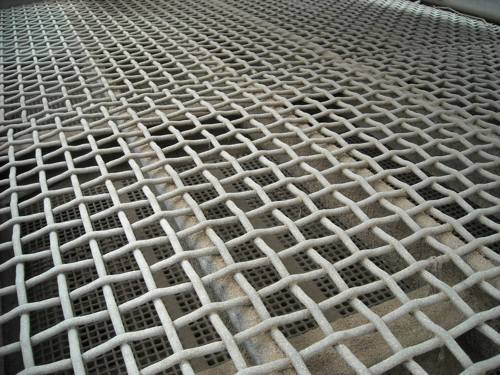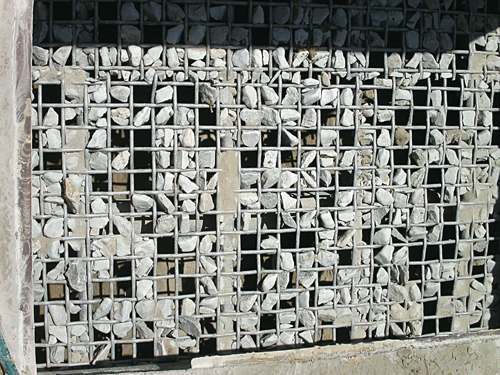A guide to some of the most common screening problems, their causes and ways to fix them
p>A guide to some of the most common screening problems, their causes and ways to fix them
Screen media inefficiencies can have just as much of an effect on your product quality, production and profit as a poorly performing screen box. Screen media modifications cost less than screen box upgrades, so it’s a good idea to check your screen media first before spending unnecessary money. Major Wire Industries Limited, a leading global manufacturer of screen media, has determined some of the most common screening problems, their causes and solutions for you to fix them.
Problem #1: Material is coming off the end of the deck, instead of passing through the screen cloth.
Cause: The wire diameter is too large for the application, resulting in a loss of open area.
Solution: Consider reducing wire diameter size to increase the open area, expecting to possibly see some reduction in wear life.
Cause: The bed depth is too heavy for the screen deck (e.g., you’re feeding too much material, running 400 TPH on a plant designed for 250-300 TPH).
Solution: Make sure you don’t run more material than the screen deck was designed to handle.
Cause: Material is being dropped or fed too far down the screen, wasting potential open area.
Solution: Reposition the conveyor or drop box feeding the screen so the material hits on the feed plate of the screen, or as close as possible to the back of the feed end. Be sure the material spreads across the screen evenly.
Cause: The screen cloth is blinded by wet, sticky material, or is pegged with near-size material, resulting in a loss of screen cloth open area.
Solution: Consider changing the woven wire screen cloth to a self-cleaning screen cloth design.
Self-cleaning screen media, like Major Wire’s Flex-Mat 3, is one of easiest ways to eliminate this problem. Polyurethane strips bond the individual wires and allow them to vibrate independently at different frequencies. This creates more screening action so properly sized material falls through instead of moving off the end of the deck. Flex-Mat-type screens produce up to 30 per cent more screen capacity, providing even more potential for material to fall through.
Problem #2: The screen cloth is breaking or failing before it wears out.
Cause: The screen cloth is too wide or too narrow for the screen deck.
Solution: Check to make sure that the screen cloth hooks are not hitting the side of the screen or that the cloth is not too narrow to allow proper tensioning by the clamp rails.
Cause: The crown bar rubber is missing from the crown rails, or it is worn out.
Solution: Replace the crown bar rubber and be sure to completely cover the crown rails.
Cause: There are gaps between the screen cloth and the crown bar rubber. The screen deck may be damaged, or the crown rails might be bent or excessively worn.
Solution: Check for damage or wear, and make sure all crown bars support the screen cloth with no gaps between the screen cloth and crown bar rubber.
Cause: The feed material is being dropped from too great a height to the screen deck.
Solution: Consider repositioning your feed conveyor or chute, or adding a feed lip or feed box.
Cause: The screen cloth is loose.
Solution: Check the screen cloth for proper tension, and tighten clamps or add “j-bolts” to cross members, if necessary. If the hardware is loose, retighten or replace as necessary. Check frequently.
Cause: Material feed size may be too large.
Solution: Reduce material feed size or replace the screen with cloth that has larger diameter wires or a double wire screen cloth designed for applications with heavier feed.
Cause: The screen may not be level, which can cause uneven wear and/or breakage.
Solution: Check to make sure the screen is level. If not, check for broken or sagging springs or settling in the foundation and replace springs or crib to re-level the screen.
A stronger woven wire is often the best way to eliminate premature screen cloth breakage. Look for a woven wire with a high carbon and manganese content, like Major Wire’s OptimumWire, to hold up to high-impact conditions and abrasive materials. A wire with these characteristics can last up to 40 per cent longer, so you change out screen cloth less and spend more time producing.
Problem #3: Materials are bouncing across and over the side of the screen.
Cause: The screen is underloaded, so there is not enough material weight on the screen, causing the materials to bounce.
Solution: Increase the feed.
Cause: The stroke angle is too high, making the material bounce, rather than vibrate on and through the screen.
Solution: Flatten the stroke angle and/or decrease the stroke amplitude.
Cause: The screen is running too fast, and not allowing the material time to fall through the screen openings.
Solution: Decrease the screen RPMs.
Problem #4: The screen deck is overflowing.
Cause: The screen is overloaded, and the bed depth is not allowing the material to pass through the screen openings.
Solution: Decrease the feed.
Cause: The screen is missing a weight plug, or the plugs have been installed improperly.
Solution: Check to make sure that all of the weight plugs are properly inserted.
Cause: The stroke timing is off. Solution: Increase the RPMs.
Prevention, Prevention, Prevention
As always, simple maintenance checks can help keep your operation running efficiently and often prevent unnecessary wear and equipment failure. Be sure to observe the clamp bar rails to make sure they are never bent or damaged. Either situation can cause the screen cloth to become loose - or damage the cloth due to the flow of large material and volume. Keep bolts and wedges tight. If bolts or wedges become loose, they will cause the screen cloth to lose its tension and cause damage. Loose bolts can actually back out and fall on workers underneath. Clamp rails can fall off into the crusher or stockpile.
To protect yourself and your operation from screening problems that could decrease efficiency, and possibly cause injuries, conduct daily inspections before start-up and after shut-down. If you recognise one of these situations, fix it before it causes real problems.





